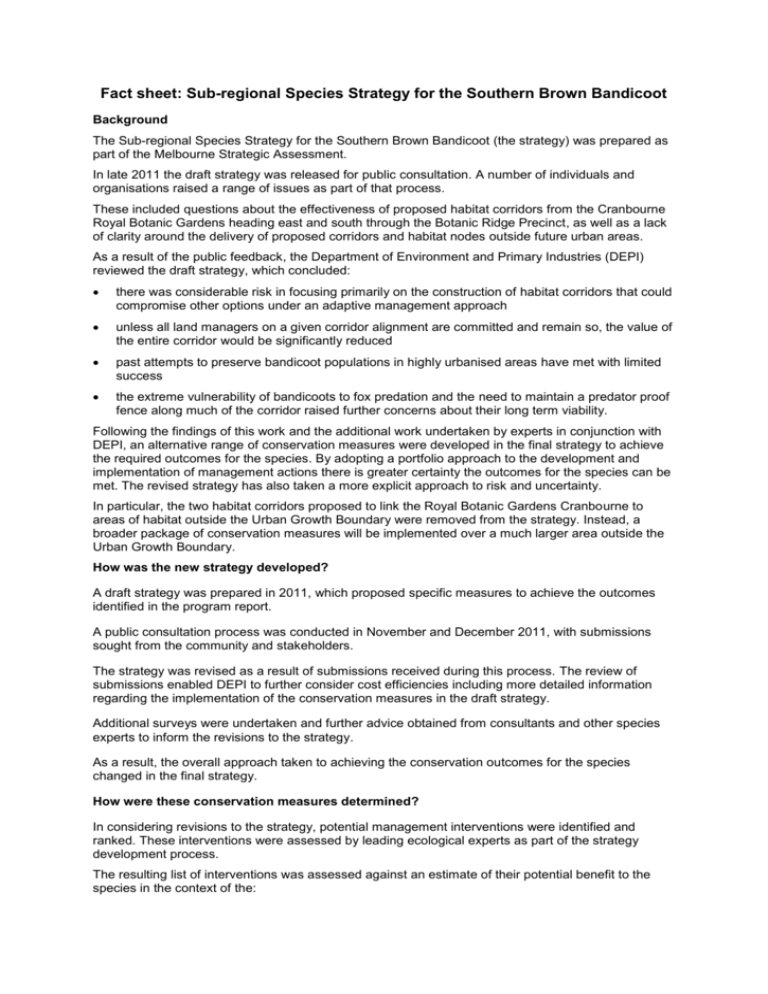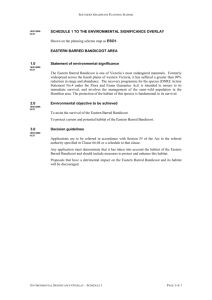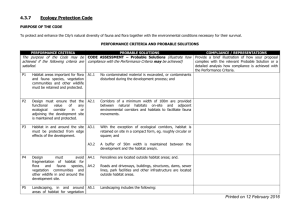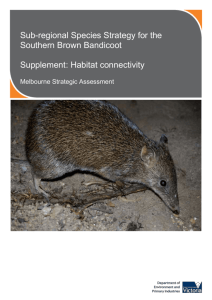Fact sheet: Sub-regional Species Strategy for the Southern Brown
advertisement

Fact sheet: Sub-regional Species Strategy for the Southern Brown Bandicoot Background The Sub-regional Species Strategy for the Southern Brown Bandicoot (the strategy) was prepared as part of the Melbourne Strategic Assessment. In late 2011 the draft strategy was released for public consultation. A number of individuals and organisations raised a range of issues as part of that process. These included questions about the effectiveness of proposed habitat corridors from the Cranbourne Royal Botanic Gardens heading east and south through the Botanic Ridge Precinct, as well as a lack of clarity around the delivery of proposed corridors and habitat nodes outside future urban areas. As a result of the public feedback, the Department of Environment and Primary Industries (DEPI) reviewed the draft strategy, which concluded: there was considerable risk in focusing primarily on the construction of habitat corridors that could compromise other options under an adaptive management approach unless all land managers on a given corridor alignment are committed and remain so, the value of the entire corridor would be significantly reduced past attempts to preserve bandicoot populations in highly urbanised areas have met with limited success the extreme vulnerability of bandicoots to fox predation and the need to maintain a predator proof fence along much of the corridor raised further concerns about their long term viability. Following the findings of this work and the additional work undertaken by experts in conjunction with DEPI, an alternative range of conservation measures were developed in the final strategy to achieve the required outcomes for the species. By adopting a portfolio approach to the development and implementation of management actions there is greater certainty the outcomes for the species can be met. The revised strategy has also taken a more explicit approach to risk and uncertainty. In particular, the two habitat corridors proposed to link the Royal Botanic Gardens Cranbourne to areas of habitat outside the Urban Growth Boundary were removed from the strategy. Instead, a broader package of conservation measures will be implemented over a much larger area outside the Urban Growth Boundary. How was the new strategy developed? A draft strategy was prepared in 2011, which proposed specific measures to achieve the outcomes identified in the program report. A public consultation process was conducted in November and December 2011, with submissions sought from the community and stakeholders. The strategy was revised as a result of submissions received during this process. The review of submissions enabled DEPI to further consider cost efficiencies including more detailed information regarding the implementation of the conservation measures in the draft strategy. Additional surveys were undertaken and further advice obtained from consultants and other species experts to inform the revisions to the strategy. As a result, the overall approach taken to achieving the conservation outcomes for the species changed in the final strategy. How were these conservation measures determined? In considering revisions to the strategy, potential management interventions were identified and ranked. These interventions were assessed by leading ecological experts as part of the strategy development process. The resulting list of interventions was assessed against an estimate of their potential benefit to the species in the context of the: sub-regional population certainty that this benefit would be achieved practicality of delivery cost. The interventions assessed included: broadscale predator control; improved public land management; habitat protection and management; establishment of new habitat corridors; and translocation and management of urban habitat. Analysis of these interventions can be found on page 16 of the strategy. What does the new strategy deliver? The revised strategy identifies a Southern Brown Bandicoot management area of 60,000 hectares outside urban growth areas and outlines an integrated package of on-ground actions, including: broad scale and in-perpetuity predator control incentive programs and voluntary land purchase to protect and manage habitat on private land improved management on public land including a continuation of conservation works at the Royal Botanic Gardens Cranbourne a research program to answer key questions about genetics and habitat usage by the species.











